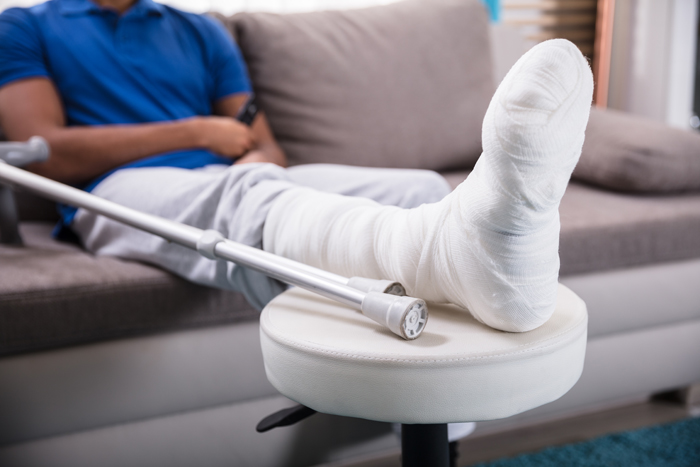Trauma and Fracture Surgery in Alwarpet, Chennai
With technological advancements, there is a rising use of arthroscopy for trauma and fracture surgery. It is a surgical procedure that enables orthopedic surgeons to see and treat problems in a joint. Arthroscopic surgery is a minimally invasive surgery in which a surgeon inserts instruments with small lenses and lights to illuminate and magnify the structure inside a joint. This enables the surgeon to see and analyze the interior of a joint and injured articular surface during trauma and fracture through a small incision.

About Trauma and Fracture Surgery
In arthroscopic surgery for trauma and fracture, a surgeon inserts a narrow tube equipped with a fiber-optic camera through a small incision to get a view inside the patient’s joints. Arthroscopy surgery helps the surgeon diagnose and treat joint conditions that primarily affect the knee, elbow, shoulder, hip, wrist, and ankle.
Who Qualifies for Fracture Surgery?
A healthcare professional would recommend arthroscopic surgery if they witness an inflammation in any of your injured, damaged, or broken joints. Primarily arthroscopy is performed on the knee, elbow, shoulder, wrist, hip, and ankle to identify the fracture and trauma. The surgery is usually performed if you are suffering from:
- Torn anterior
- Torn meniscus
- Patella out of the position
- Pieces of torn cartilage
- Fracture in knee bones
- Swelling at the lining of the joint
Why is Trauma and Fracture Surgery Conducted?
The surgery is usually performed for the diagnosis and treatment of joint problems. It allows the surgeon to look inside your joints without a large incision and view the injured articular surface. Arthroscopy surgery also helps the surgeons repair some types of joint damage, such as open reduction and internal fixation, and external fixation, with an additional small incision and minimally invasive surgical instruments.
What are the Different Types of Fractures and Trauma?
Some of the common types of fractures and trauma are:
- Open or closed fractures - If the injury breaks the skin, it is called an open fracture, and if it doesn't, it is called a closed fracture.
- Complete fractures - An injury breaks a bone in two parts.
- Displaced fractures - A gap is formed where the bone breaks.
- Partial fractures - The break does not go all the way through the bone.
- Stress fractures - The bone gets cracked, and in some cases, it is difficult to find.
What are the Benefits of Trauma and Fracture Surgery?
An arthroscopy surgery offers many benefits as they are less painful due to minimal incision; a few of them are:
- Faster recovery
- Less pain
- Fewer scars
- Fewer medications
- Shorter hospital stay
Request an appointment at Apollo Spectra Hospitals, Alwarpet, Chennai
Call 1860 500 2244 to book an appointment.
What are the Risks Associated with a Trauma and Fracture Surgeries?
The procedure is safe, and the risks and complications associated with the surgery are uncommon. However, some of the risks associated with arthroscopic surgery for trauma and fracture are:
- Damage to the tissue or nerve - The movement of the surgical instruments in the joint can cause damage to the joint structure.
- Blood clots - Surgical procedures that last for more than one hour increase the risk of developing blood clots in the legs or lungs.
- Infection - All types of invasive surgery carry a risk of developing the disease at the incision site.
An orthopedic surgeon would typically go for physical examination and imaging to diagnose fractures and traumatic conditions. Some of the imaging tests prescribed by the healthcare professional are:
- X-rays
- Arthrograms
- Computed Tomography (CT)
- Magnetic Resonance Imaging (MRI)
Depending on the severity of the injury and the patient’s condition, the fracture can be treated with surgical and non-surgical procedures. Some of the non-surgical options are as below:
- Medications such as antibiotics to reduce pain and infection
- Rehabilitation
- Immobilizing devices such as splints, casts, traction, and others
- Physiotherapy
The aftercare of an arthroscopic surgery would include the following:
- Medications - You should take the medicines prescribed by the surgeon for pain relief and inflammation.
- Protection - Make use of protective gear such as splints, crutches, and others temporarily for comfort.
- Exercise - To improve the function and strength of your joints, the healthcare professional would prescribe physical therapy and rehabilitation.
- R.I.C.E - To reduce the swelling and pain, you should give rest, apply an ice pack, compress, and elevate the joint for a few days.
Symptoms
Our Top Specialities
NOTICE BOARD
CONTACT US
CONTACT US
 Book Appointment
Book Appointment


.svg)
.svg)
.svg)
.svg)








